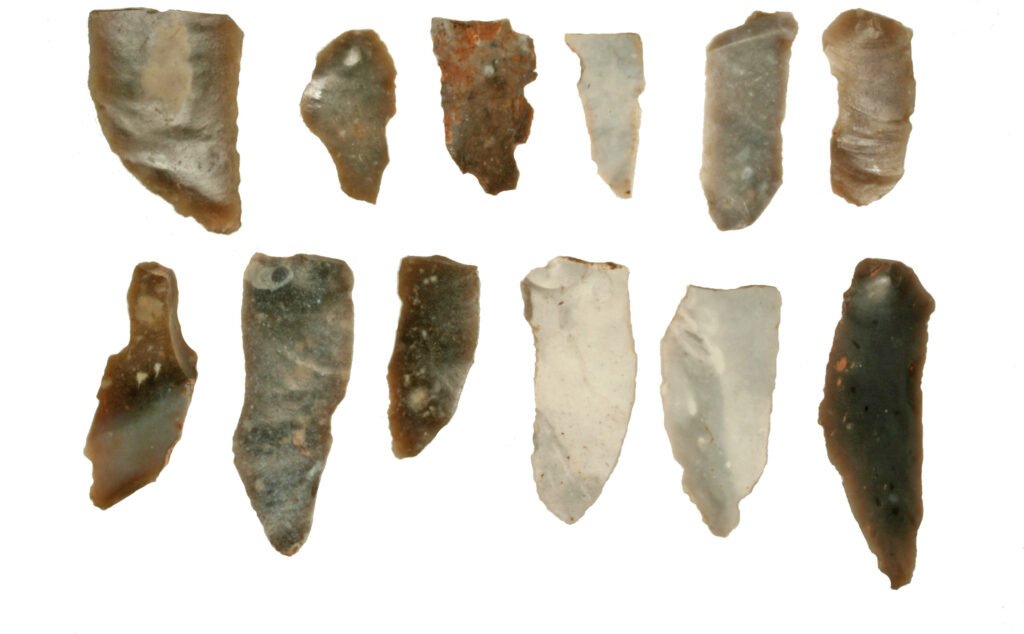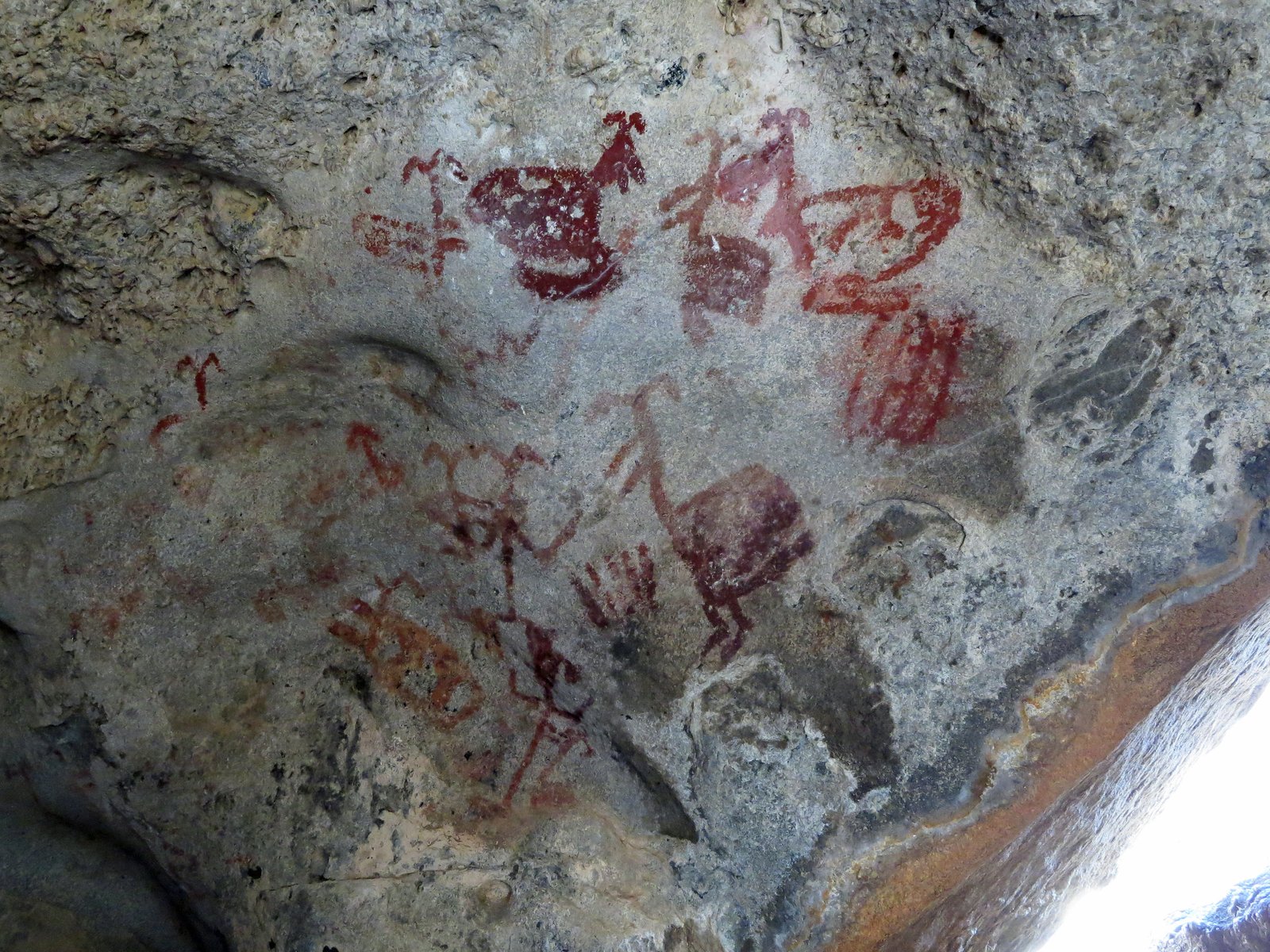Table of Contents
The final and third stage of the Stone Age was known as the Neolithic Age, or New Stone Age. It took place in India between 7,000 and 1,000 B.C. The development of settled agriculture and the use of polished stone tools and weapons are the primary characteristics of the Neolithic Age. During this time, ragi, horse gram, cotton, rice, wheat, and barley were the main crops grown. At this age, pottery first appeared.
Neolithic age

- In India, the Neolithic Age lasted from roughly 7,000 to 1,000 B.C.
- The Chalcolithic Age, which lasted from about 2100 to 700 B.C., succeeded the Mesolithic Age, which preceded the Neolithic Age and lasted from 9,000 to 4,000 B.C.
- Sir John Lubbock is credited with coining the term “Neolithic.”
- Golden Childe used the term Neolithic Revolution. He considered the age as a self sufficient food-producing economy.
According to Miles Burkitt, the Neolithic age had the following characteristics
- Practice of Agriculture.
- Domestication of animals.
- Grinding and polishing of stone tools.
- Pottery making.
Why Agriculture ?, There are many theories
- Theory of Gordon Childe The environmental shifts that led to people settling close to water sources included warming and drier weather. Agriculture resulted from the development of new relationships with plants as a result of this.
- Braidwood’s Theory: Human experimentation produced it. This was a natural experiment.
- Binford’s Theory: He discusses pressure and stress factors. There was a population increase. Stress related to demographics existed. More pressure and fewer resources.
Agriculture was first practiced by humans. - Kent Flannery’s Theory: Growing food was not as beneficial as farming.
important regions of Neolithic culture
- Northwest: Mehrgarh → Earliest evidence of cultivation.
- Kashmir valley: Burzahom.
- Belan valley : Sarai nahar rai, Chopani mando, mahagara.
- Bihar: Chirand.
- North east : Daojali hading, sarutaru.
- South : Sangamkallu, Nagarjunikonda, Takkalkota, Hallur.
Regional characteristics of the Neolithic Age
- The main crops grown during this time were ragi, cotton, rice, wheat, and barley. During this time, people domesticated goats, sheep, and cattle and lived in pit homes.
- As well as tools made from polished stones and bones, axes, chisels, and microlithic blades were frequently employed.
- The Neolithic Era saw the advent of pottery.
- The Neolithic Era is widely recognized for its noteworthy advancements in Megalithic Architecture.
- During this time, homes were usually made of mud and reed, either round or rectangular, though some areas also used mud-brick construction.
- During this time, people lived sedentary lives.
North Western region
The northwest region of the Indian subcontinent contains the oldest artifacts related to Neolithic culture.
Some well-known locations in the northwest are Kachi Plain in Baluchistan, Loralai Valley, and Quetta Valley (also known as the “bread basket of Baluchistan”). This region contains a few archaeological sites, including Mundigak, Anjira, and Kili Gul Muhammad.
Mehargarh has been investigated the most thoroughly.
Mehargarh
- The archaeological history of Mehargarh, in Baluchistan’s Kachi Plain, is stratified and includes seven different occupational levels. Interestingly, Levels 1 and 2 are associated with the Neolithic era.
- Based on archeological discoveries, Mehargarh’s settlement and agricultural activities started about 7000 BC. Pots and pans and other pottery items had also been introduced by 6000 BC.
- Excavations at Mehargarh during the pre-pottery period showed square and rectangular homes, frequently with internal compartments for storing grain. Crops such as wheat and barley were cultivated by the inhabitants, and they also uncovered tools for grinding and polishing. In addition, bones from both wild and domesticated animals, including pigs, sheep, and goats, were found, along with proof of cotton cultivation.
- A wide range of pottery, including items made by hand and on a wheel, has also been produced in Mehargarh. The discovery of numerous grave sites suggests a belief in an afterlife. Goats were buried with the dead, and some grave sites had valuable stones in them. Notably, there were also reports of double burials in the region.
Kashmir Valley
- Burzahom is one of the most well-known places in the Kashmir Valley, along with Gufkral, which is close to Srinagar. The translation of the name “Burzahom” is “place of Birch.” People lived in pit houses in Burgahom, which were either oval or round in shape. There were hearths inside and ladders to make it simple to enter and exit the deeper pits in these pit homes at Burzahom.
- Archaeological digs at Burzahom have revealed the existence of unique pottery, which includes cross-gray and typical pottery. A bone tool industry was also clearly visible in the region, and burial evidence was found, including animal burials in which dogs were buried with their owners.
Belan Valley in Uttar Pradesh
- Belan is a river Tones tributary that empties into the Ganga close to Allahabad. Belan Valley is home to numerous archaeological sites.
- Koldihwa : Koldihwa is well-known for having the earliest rice cultivation evidence. Numerous varieties of pottery, including red, black, and black and red pottery, have been discovered at Koldihwa. Additionally, storage jars from Koldihwa have been found, providing insight into the residents’ methods of storing goods. Koldihwa people lived in wattle and daub houses made of straw and clay, demonstrating their inventive use of natural materials for building.
- Mahagara : This site, where evidence of barley cultivation and the presence of bone remains have been found, represents a single culture.
North-East
Polished stone tools have been found at two important archaeological sites in the northeast: Daojali Hading and Sarutaru.
Maharashtra
We have found evidence of Neolithic culture near the Chandoli area.
South India
The Neolithic sites of Sangamkallu, Nagarjunikonda, Takkalkota, and Hallur are important. South India is known for its “Ash Mounds,” which are made of burnt cattle manure. South India is where the earliest records of millets and ragi can be found. Crop cultivation was not as important as the pastoral economy.
Bihar
The two most visited locations in Bihar are Senuar and Chirand. They are well-known for their bone tools and for growing a variety of grains, including rice, lentils, wheat, and barley. Their ceramics are also renowned to be handmade. Senuar is located near Rohtas.
Affiliate :-
Pre & Mains : Buy History NCERT 11th class by R.S.Sharma for UPSC
History Optional : Buy A History of Ancient And Early Medieval India : From the Stone Age to the 12th Century By Upinder Singh
Inline Image credits :- wikimedia commons
